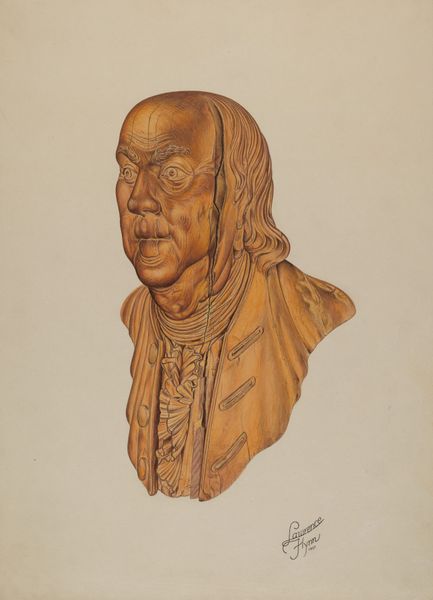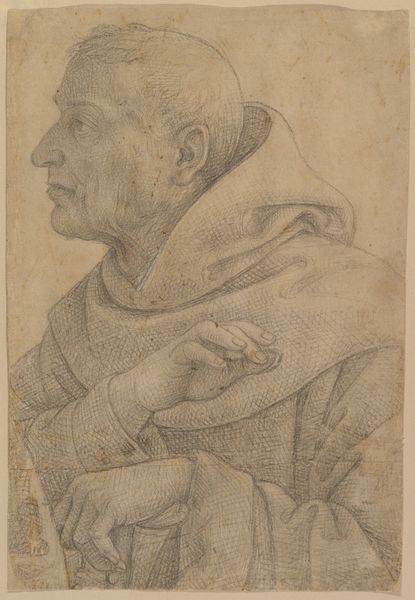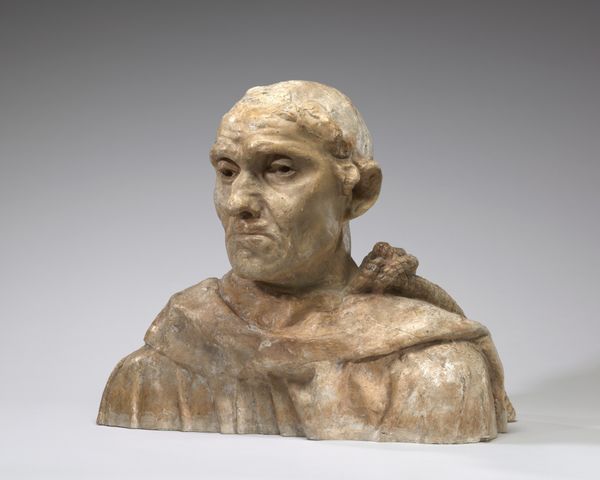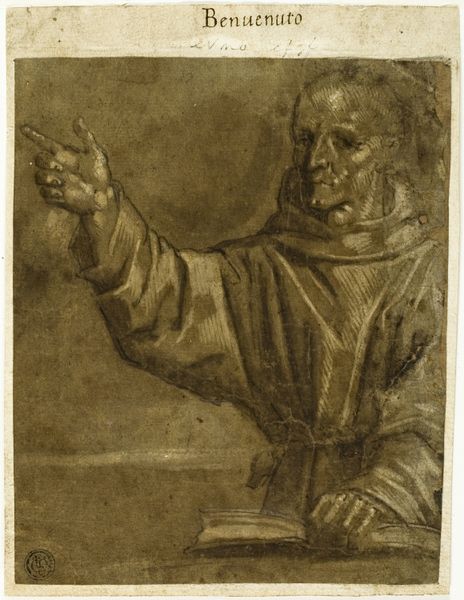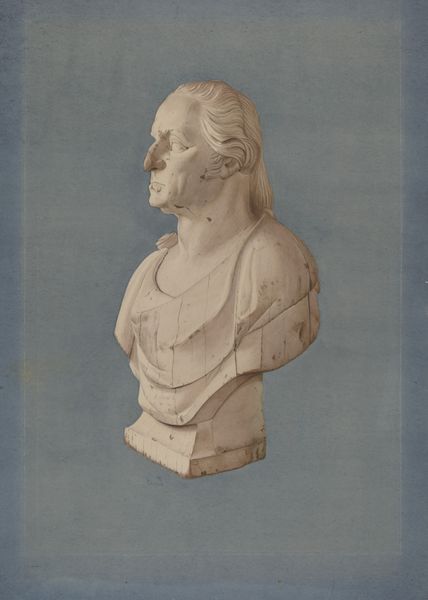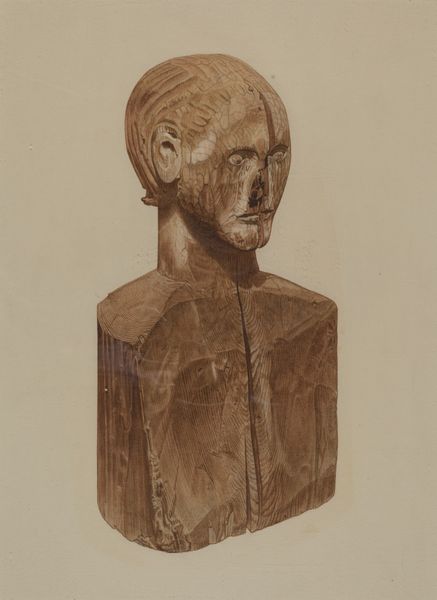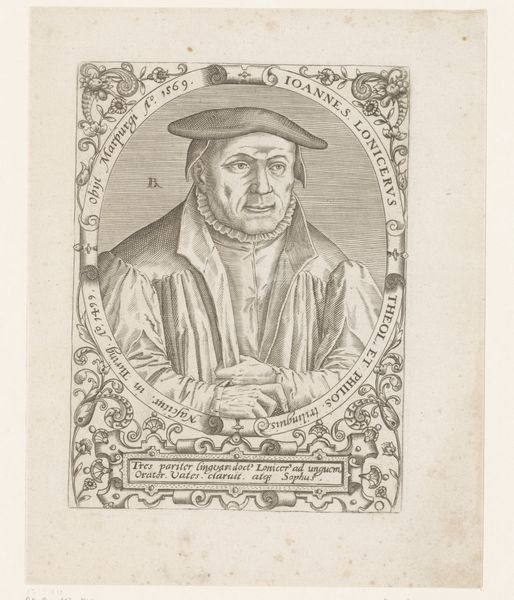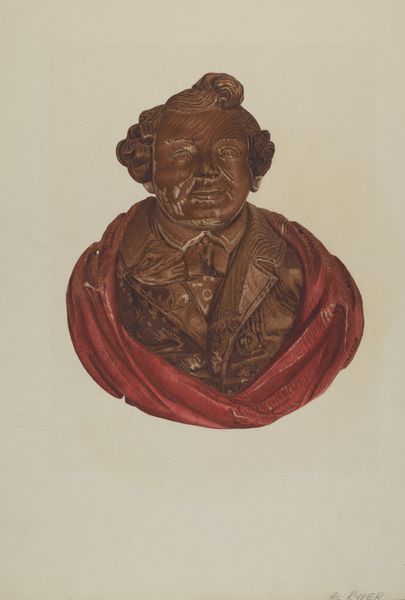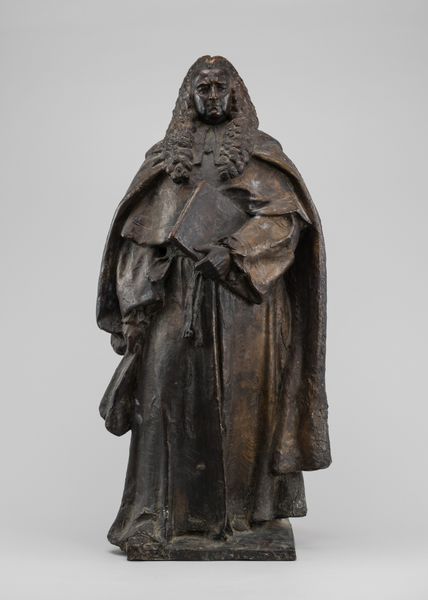
drawing, pencil, wood, charcoal
#
portrait
#
drawing
#
charcoal drawing
#
pencil
#
wood
#
portrait drawing
#
charcoal
#
portrait art
Dimensions: overall: 41.6 x 31.9 cm (16 3/8 x 12 9/16 in.)
Copyright: National Gallery of Art: CC0 1.0
Editor: Here we have "Figurehead: Benjamin Franklin," created between 1935 and 1942. It looks like it’s a rendering of a wood carving, likely made with charcoal and pencil on paper. I’m struck by how aged the wood looks, almost fragile. What do you see when you look at this piece? Curator: Well, I am immediately drawn to the relationship between the depicted object and the means of its representation. This isn't Franklin himself, but a drawing of a wooden figurehead, presumably once gracing a ship. Consider the labor involved: first, the carving of the wood, then the drawing rendering that form. It is almost like a doubling or mediation through materials and work. Editor: That’s interesting. I hadn’t thought about the labor involved. The cracks in the wood, were those common? Or perhaps indicative of poor craftsmanship? Curator: Perhaps. Or simply evidence of age and use. But the cracks, those flaws, are now part of the aesthetic. It challenges our conventional notions of "high art." We typically separate “fine art” from decorative arts and functional objects like figureheads. But this drawing blurs that distinction. We also ought to examine how the economic context—the shipping industry, artistic patronage during the depression era—impacted the creation and value of such an object. What kind of vessel do you imagine this adorned? Editor: I picture a merchant ship, maybe trading between colonies. And it does seem like the drawing elevates a utilitarian object. The focus on material—the grain of the wood, the artist's marks—almost abstracts the historical figure himself. Curator: Precisely! It makes us think about how representations of power and identity are literally constructed, layer by layer, from the raw materials available, and embedded in their production context. Editor: I've definitely gained a new perspective on this piece. Thinking about the multiple layers of labor and materiality is really eye-opening. Curator: Indeed. This piece becomes less about pure representation, and more about a conversation between making, material, and social forces.
Comments
No comments
Be the first to comment and join the conversation on the ultimate creative platform.
